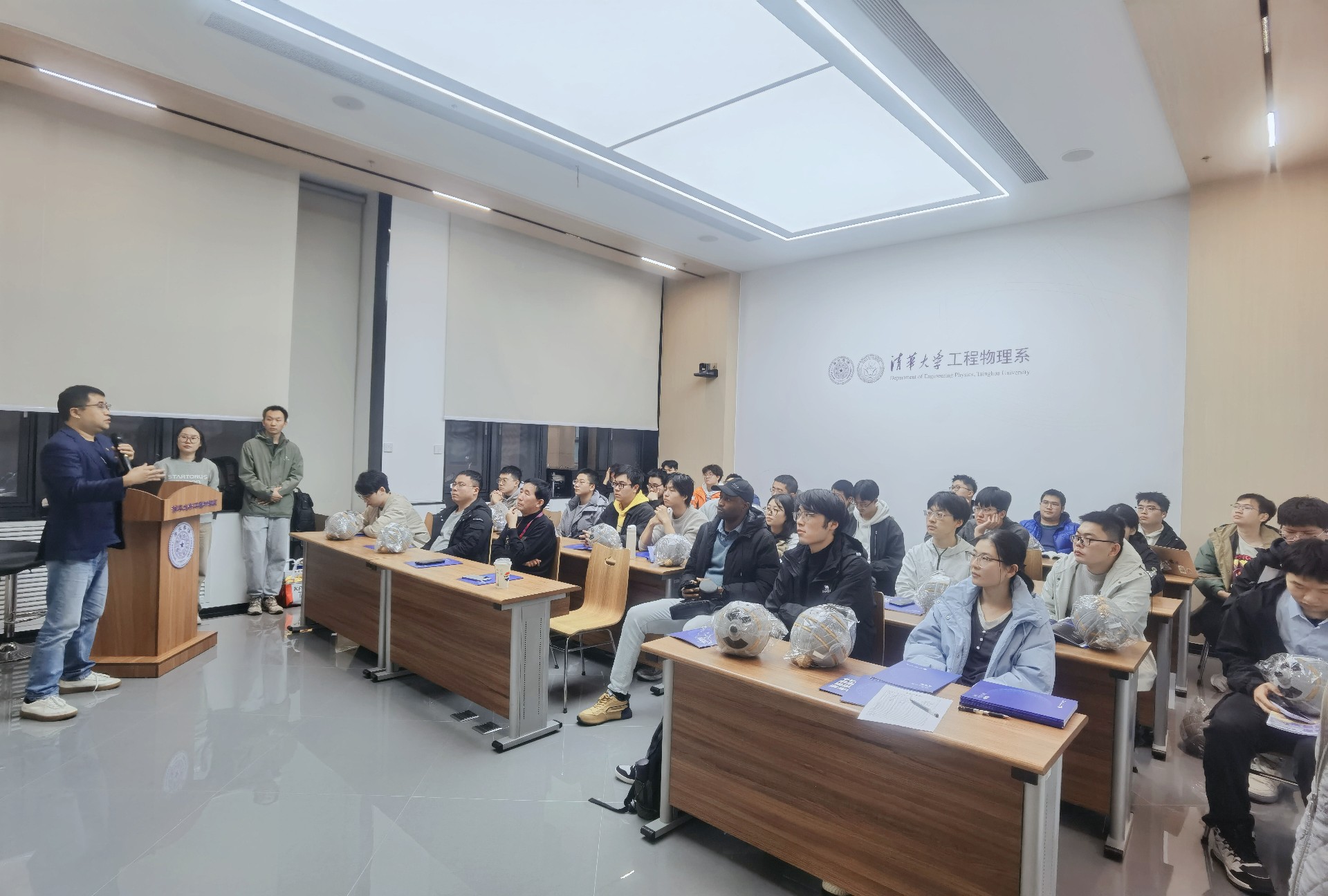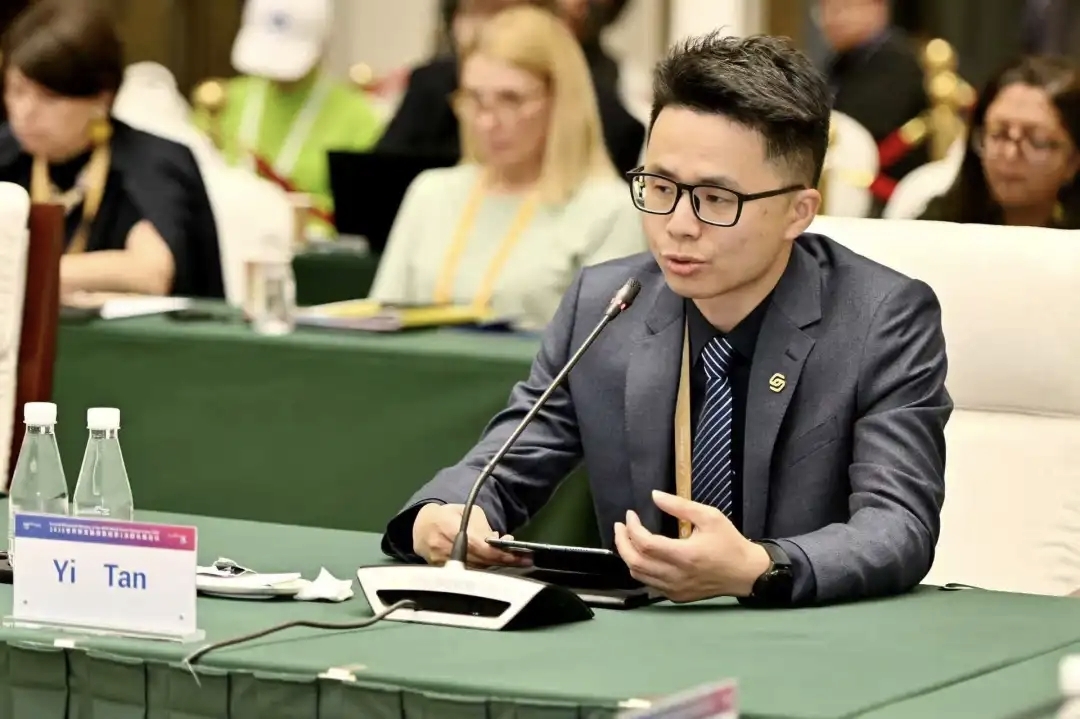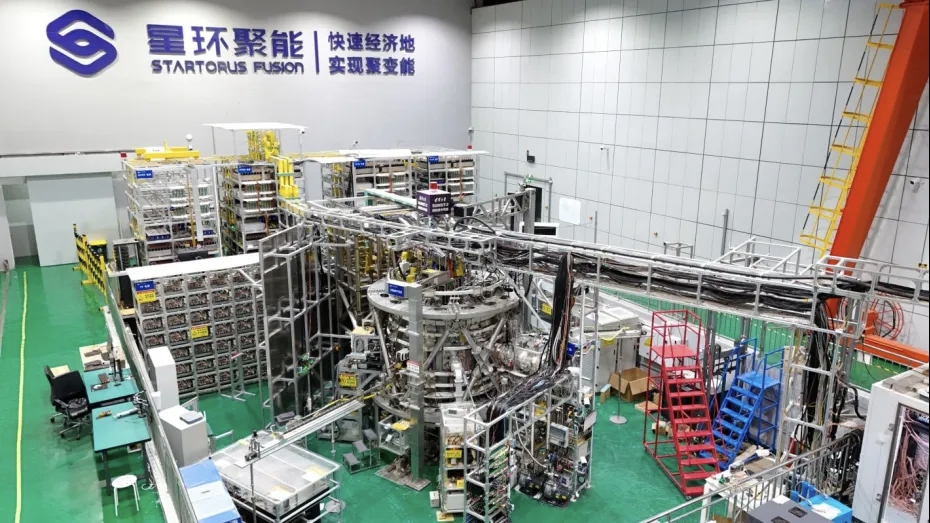On April 14, the Nuclear Regulatory Commission (NRC) released a statement that it would regulate fusion energy systems based on existing nuclear materials licensing. NRC staff has begun a limited revision to materials licensing regulations (Tritium and other radioactive materials which occur or are used in fusion systems are normally categorized by the NRC as byproduct material).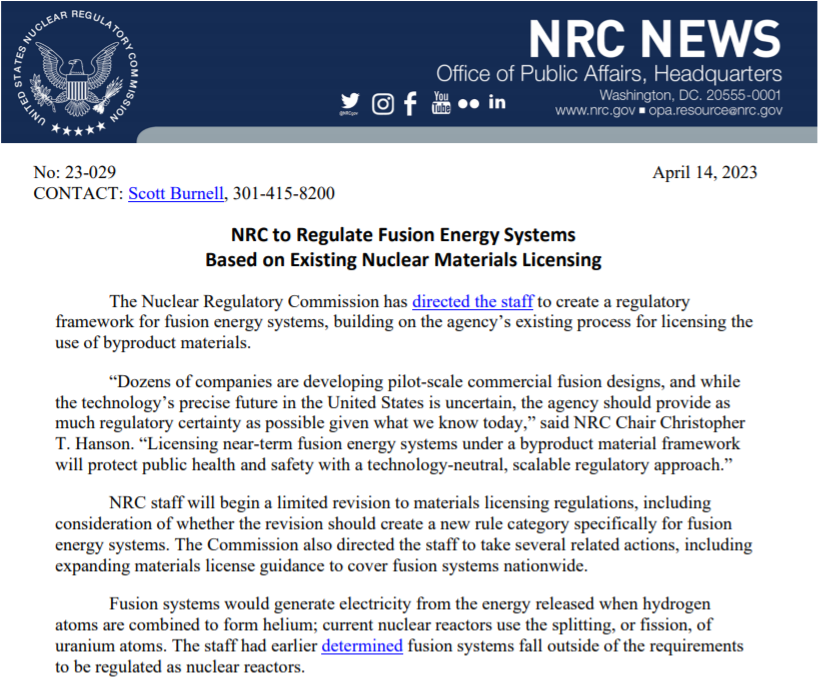
Let’s first have a quick review of some key time points in the process of establishing the regulatory framework.
Timepoints
The U.S. Congress passed the Nuclear Energy Innovation and Modernization Act in 2019, requiring NRC to establish a regulatory framework for licensing commercial advanced nuclear reactor technologies by December 31, 2027, to support the development and commercialization of fusion energy.
In September 2022, NRC proposed three possible fusion regulation options in its white paper Licensing and Regulating Fusion Energy Systems: utilization facility approach, which is applied to fission, byproduct material approach similar to how accelerators are regulated, and a hybrid or new approach. The white paper also regarded a defined licensing and regulatory framework for fusion energy instrumental to the future prosperity of the industry.
In November 2022, NRC held a conference on fusion regulations. The Department of Energy, private industry, and other representatives agreed that the regulation of fusion energy should be separated from the regulation of nuclear fission.
In April 2023, NRC released a statement on the regulatory framework for fusion energy and clarified that it would regulate fusion energy systems based on the existing process for licensing the use of byproduct materials.
There are many explanations for NRC’s choosing of the second approach in the document Licensing and Regulating Fusion Energy Systems.
Firstly, scientists around the world have confirmed that nuclear fusion harbors no safety hazards as fission. Generally, fuels used in fusion won’t proliferate, and fusion reactions can be stopped at any time. NRC has earlier determined fusion systems fall outside of the requirements to be regulated as nuclear reactors and regulation separation is necessary.
Secondly, the new hybrid approach entails the addition of many complicated yet otiose rules, causing great regulatory uncertainties to fusion energy developers. “Dozens of companies are developing pilot-scale commercial fusion designs” and “the agency should provide as much regulatory certainty as possible,” said NRC Chair Christopher. Hanson. Among the twenty-odd private fusion companies in the U.S., many are seeking to deploy power plants in the coming decade. However, it takes a rather long time to work out the hybrid regulatory framework, and private fusion companies and assets in the company will flow out of the U.S. into other countries (Britain, Japan, and other countries that have already established fusion strategies and regulatory frameworks or are going to do so). This will threaten its leadership in fusion energy.
Additionally, the existing byproduct material framework under which accelerators are regulated is legally applicable to fusion energy systems to be licensed and regulated. This approach will protect public health and safety, a conclusion based on NRC’s previous knowledge.
The second approach in the white paper is the best choice for the U.S., considering the necessity of regulation separation, the urgency of making a regulatory framework, and NRC’s deliberation of how mature the byproduct material framework is. The decision has won the support of many fusion developers. For example, Helion Energy agreed on social media that “this approach provides a clear and effective regulatory path for our team to deploy clean, safe fusion energy.”
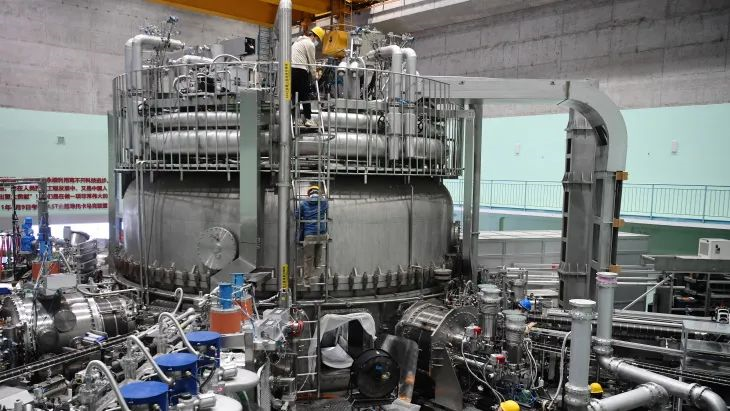
Tokamak Device EAST (Image Source: Hefei Institutes of Physical Science)
In recent times, numerous countries around the globe have made significant technological breakthroughs and engineering advancements in the field of fusion. On April 12, China’s Experimental Advanced Superconducting Tokamak (EAST), hailed as the “Artificial Sun”, broke a new world record by successfully maintaining a high-confinement plasma operation for 403 seconds without interruption. Researchers at Germany’s Max Planck Institute for Plasma Physics (IPP) have discovered a method to significantly reduce the required distance between the hot plasma and the wall in fusion devices, paving the way for smaller and more cost-effective fusion reactors.
These technological breakthroughs and engineering advancements signify a step closer to controlled nuclear fusion. They also highlight the urgency for countries to establish regulatory frameworks for fusion. Taking NRC’s recent establishment of a fusion regulatory framework as an opportunity, we can expect a surge of nations globally in formulating their own fusion regulatory frameworks. This will be a crucial lead forward for humanity towards safe, reliable, and sustainable nuclear fusion energy, and will present significant development opportunities for China’s commercial fusion enterprises.


